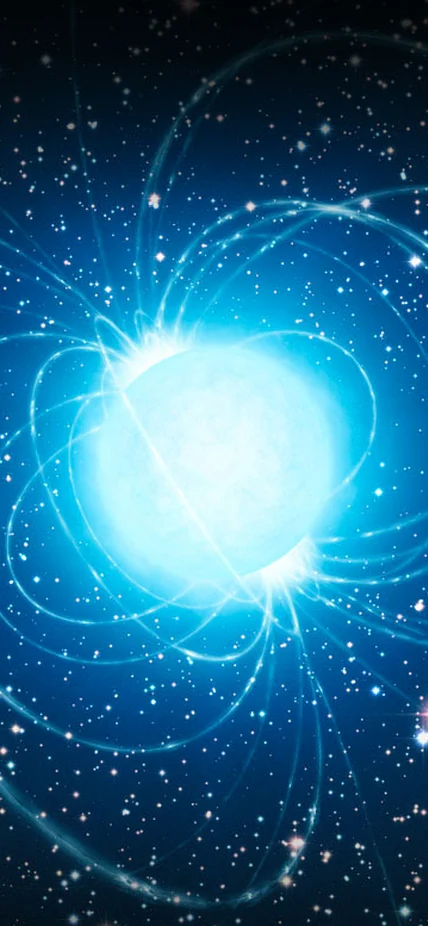Fast radio bursts are quick, bright flashes of radio waves from an unknown source in space. They are a mysterious phenomenon that last only a few milliseconds, and until now they have not been observed in real time. An international team of astronomers, including three from the Carnegie Observatories, has for the first time observed a fast radio burst happening live. Their work is published in Monthly Notices of the Royal Astronomical Society.
There is a great deal of scientific interest in fast radio bursts, particularly in uncovering their origin.
“These events are one of the biggest mysteries in the Universe” noted Carnegie Observatories' Acting Director John Mulchaey. “Until now, astronomers were not able to catch one of these events in the act.”
Only seven fast radio bursts have previously been discovered, since the first one found in 2007. All were found retroactively by combing through data from the Parkes radio telescope in eastern Australia and the Arecibo telescope in Puerto Rico.
“These bursts were generally discovered weeks or months or even more than a decade after they happened! We’re the first to catch one in real time,” said Emily Petroff, a PhD candidate from Swinburne University of Technology in Melbourne, Australia and lead author of the publication.
Swinburne is a member institution of the ARC Centre of Excellence for All-sky Astrophysics (CAASTRO).
In order to observe the fast radio burst in real time, the team mobilized 12 telescopes around the world and in space, including Carnegie’s Magellan and Swope telescopes. Each telescope followed-up on the original burst observation at different wavelengths.
Measurements of the interaction between previously detected fast radio burst’s flashes and the free electrons their signals encountered in space as they traveled to reach us had previously indicated that the bursts likely originated far outside of our galaxy. But the idea was controversial.
The team’s data indicates that the burst originated up to 5.5 billion light years away. This means that the sources of theses bursts are extremely bright and could perhaps be used as a cosmological tool for measuring and understanding our universe once we come to understand them better.
“Together, our observations allowed the team to rule out some of the previously proposed sources for the bursts, including nearby supernovae,” explained Carnegie’s Mansi Kasliwal who was on the team along with Mulchaey and colleague Yue Shen. “Short gamma-ray bursts are still a possibility, as are distant magnetic neutron stars called magnetars, but not long gamma ray bursts.”
Gamma ray bursts are high-energy explosions that form some of the brightest celestial events. Long bursts can signify energy released during a supernova and are followed by an afterglow, which emits lower wavelength radiation than the original explosion.
Another interesting piece of information the team was able to gather about the burst is its polarization. The orientation of the radio waves indicates that the burst likely originated near or passed through a magnetic field, information that can help narrow down potential sources going forward.
“As we continue to search for the source of fast radio bursts, Carnegie is well positioned to make big strides in the field,” Mulchaey said. “Quick access to big telescopes like Magellan may be the key to solving this mystery.”
Parts of this research were conducted by the Australian Research Council Centre of Excellence for All-sky Astrophysics
(CAASTRO). GMRT is run by the National Centre for Radio Astrophysics of the Tata Institute of Fundamental Research.
Image of magnetar courtesy ESO/L. Calcada
Research with the ANU SkyMapper telescope is supported in part through an ARC Discovery Grant. Part of the funding for GROND was granted from a Leibniz-Prize. The Dark Cosmology Centre is supported by the Danish National Research council. Other support came from Curtin Research Fellowship;, EXTraS, funded from the European Union's Seventh Framework Programme for research, technological development and demonstration; Hubble Fellowships; a Carnegie-Princeton Fellowship; the Arye Dissentshik career development; the Willner Family Leadership Institute Ilan Gluzman (Secaucus, N.J.), the Israeli Ministry of Science; Israel Science Foundation; Minerv;, Weizmann-UK; the I-CORE Program of the Planning and Budgeting Committee.
